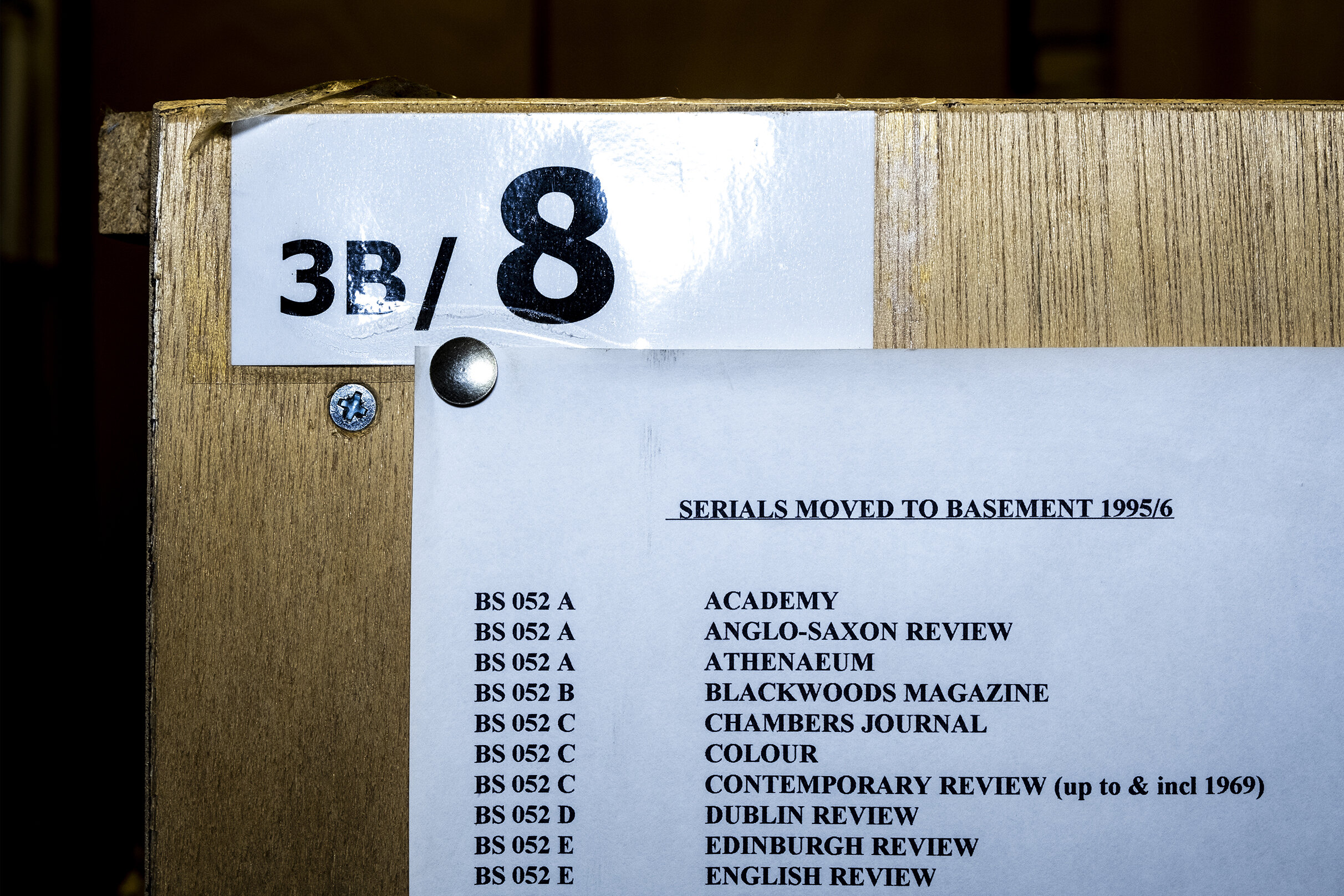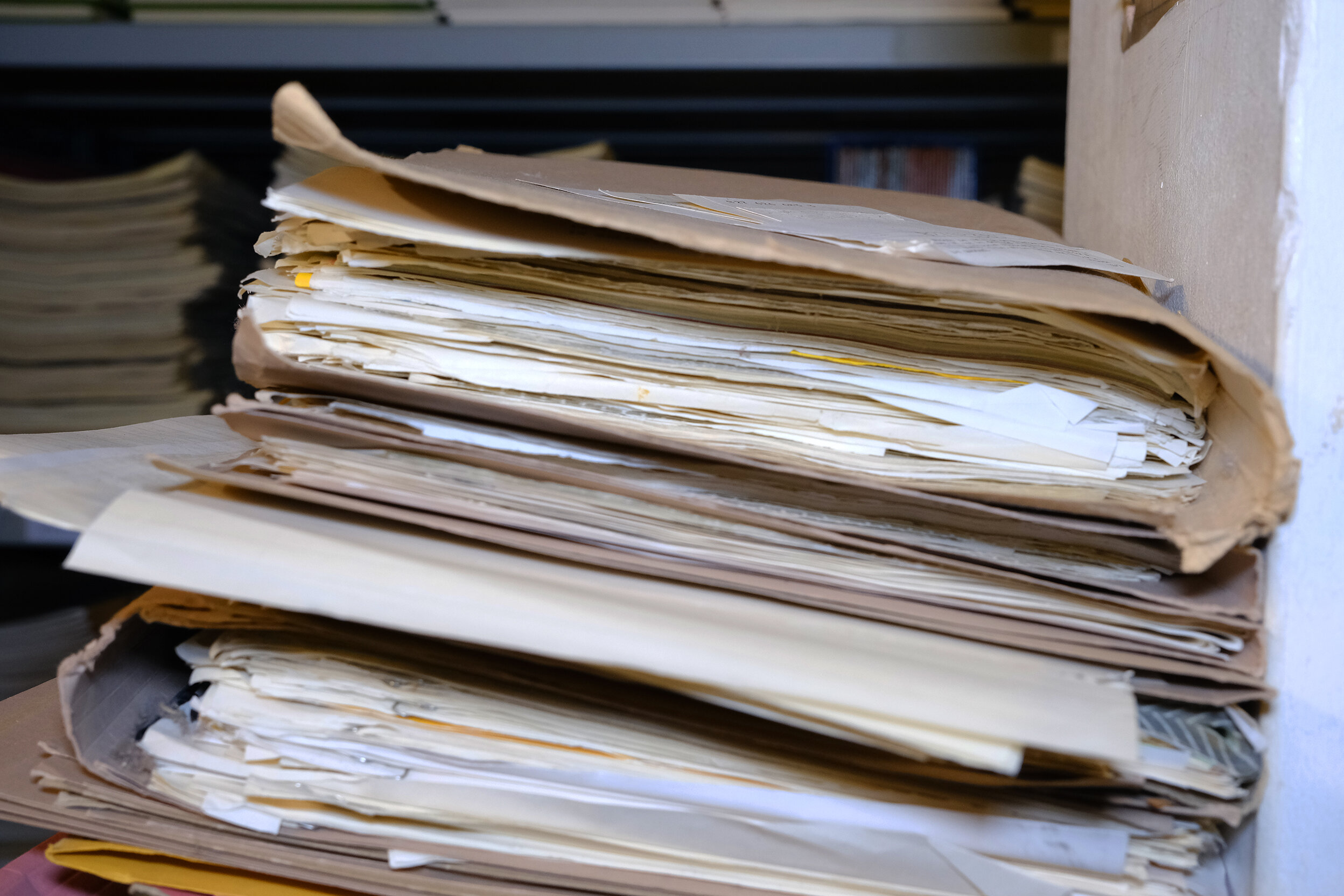DECEMBER 6 2021
DOCUMENTATION OF PROCESS
1. Digital manipulation of photographs, scanned material and 2D design towards exhibition panelling
2. SKINS - Laser-cut perspex work at Makerspace Hull; fragmented text excercise
3. LIDAR scanning stacks-spaces, sequencing and rendering animation
4. Heat-pressed vellum paper prints









SEPTEMBER 4 2021















JULY 26 2021
The closed access reference and lending stacks at Hull Central Library house a collection of catalogued, uncatalogued, coded, obscure and hidden material, from journals and reports to health service public guidance, patents, poetry and scripts - all of which have been removed from the open shelves, creating a kind of between-space where the libraries’ stock policy at once protects it, and renders it ever-more vulnerable.
A journey through the stacks becomes a story of value systems. The fact that Becky and I have found surprising and revelatory work in our search for medical history material, often tucked away in dark corners, on cardboard boxes beside newspapers and folders, or just barely held together by threadbare bindings, is reassuring. Becky and the team are undertaking digital cataloguing (most material is still only searchable by card catalogues), and documentation to increase public awareness of the depth in the wider collections. The majority of items I have pulled to check out in more detail and form a new stack, for interpretation through print experimentation, were last loaned to the public around the 1960s. Some of those items however are around 150 years old, and others even older.
Many titles in the stacks are out of print, and even in today’s age of digitised resources and public domain interest, might be difficult to source from elsewhere. Reasons for protecting these from the open shelves, particularly when a large number of those items are in fragile condition, but maintaining access to the reserves for research purposes become clear very quickly. The challenge for libraries’ staff however seems to be just that - protecting, and maintaining.
The last dates stamped on many of the items we have pulled, seem to correlate with the Central Library building works of 1959-62, with a new extension to the original 1901 build designed by Joseph Rankine accommodating new lending and music libraries on the ground floor, the Library of Science, Technology and Commerce on the first floor (many of the items in this former library now belong to the stacks), the Reference Library on the second floor, and an area of 8,000 sq. feet dedicated to new book stacks. As an indication of the growth in stock as new branch libraries opened up across the city throughout the early-mid 20th century, there were 472,921 books in stock in Hull in 1957-58, rising to almost 700,000 in the mid-1960s, and 893,590 in 1994*.
The collision of this accumulation of material in public libraries with cuts to expenditure, and increasing focus on the role of digital platforms, formats and a shifting audience, creates a situation whereby the stacks come to represent something more structured than they physically appear - a solidarity against some of these concerns - the solidarity of written language calling across time, and in this the spaces they occupy invite investigation and discovery as a stratified but disjointed cross-section of the past, lined up or laying scattered on frameworks of industrial order. These are spaces for new poetic associations waiting to be proposed.
*History and Development of Libraries in Hull’, Geoffrey Drewery, 2002.
“In a library, no empty shelf remains empty for long... the problem of space is inherent in the very nature of any collection of books. This is the paradox presented by every general library: that if, to a lesser or greater extent, it intends to accumulate and preserve as comprehensive as possible a record of the world, then ultimately its task must be redundant, since it can only be satisfied when the library’s borders coincide with those of the world itself.”
“There were two sets of double doors leading out of the antechamber, one marked STACKS and the other TOMES. Not knowing the difference between the two, I headed to the ones labeled STACKS. That was what I wanted. Stacks of books. Great heaps of books. Shelf after endless shelf of books.”







JULY 4 2021
Photographs in this collection were shot on 35mm black and white film.
MARCH 18 2021
“A library is an ever-growing entity; it multiples seemingly unaided, it reproduces itself by purchase, theft, borrowings, gifts, by suggesting gaps through association, by demanding completion of sorts.”
About a year ago, I was given my first glimpse of the labyrinthine stacks at Hull Central Library. This presented an opportunity I hadn’t anticipated among many appointments I had made at archives across the region, for the purposes of viewing material related to the geology of the East Yorkshire coastline - a chance to meet an IP Librarian, and discuss the perceived differences between libraries and archive systems and agendas. In October, Becky and I reconvened after my Flood Story show with an idea: would the grounding or coding of messages around memory in physical objects extend in the same way through a journey into the stacks, into literature, as it had stones and geologic matter?
Across three huge spaces and a basement behind the scenes at the library, books, journals, magazines, inventories, maps and lists line shelves, windows, plan chests, trolleys and boxes - a hammered metal echo-chamber walled by peeling 60’s pastel paint, lit by a gallery of waining amber bulbs and shards of grey light from Edwardian windows, of material familiar in subject, often in less familiar and increasingly less popular formats; untouched, cataloguing incomplete or still outmoded, and of questionable value (this is the topic which seems to keep these collections frozen and will be examined closer in time to come).
Through my residency I hope to reveal a world of forgotten stories, to document absence, to ask questions of the criteria for material being deallocated or removed in the context of how libraries operate today, and the changing shape of information in physical forms towards digitisation across public or statutory services, through a visual excavation. This collaborative excavation will begin with a series of documented tours through the collection spaces led by Becky, with specific material on subjects including medicine and healthcare, the human body, and environment gradually being removed to use as a basis for new print and digital media work which interrogates a counterpoint or association to the physical structure of the stacks. This journey will culminate in exhibition across several physical and digital platforms, including Hull library branches and interactive online works from August 2021.
Credit: Rebecca Binnington





















































